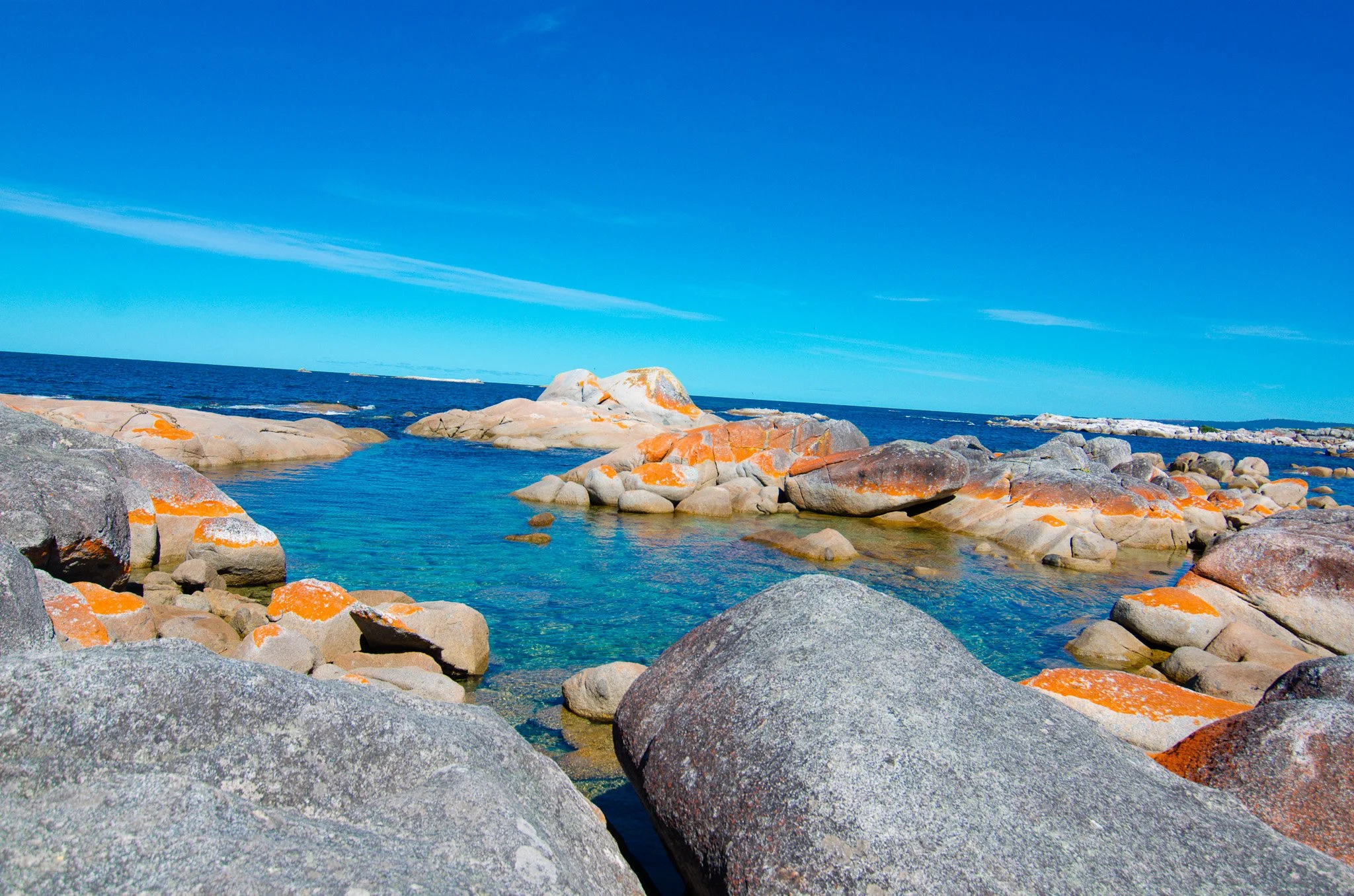Tasmania Trip - Part 2
From Lavender Dreams to Fiery Shores: The Long Road to Cradle Mountain
We left Launceston in the rearview mirror, the early morning light spilling across the Tamar Valley as we set off on the next leg of our Tasmanian journey. The road ahead promised rugged peaks and alpine wilderness — Cradle Mountain, one of the island’s most iconic landmarks, rising above the glacial waters of Dove Lake. Fifth highest in the state and nestled in the northern reaches of the Cradle Mountain–Lake St Clair National Park, it stands not just as a mountain, but as a symbol — of Tasmania’s raw, unfiltered beauty.
But before we reached that windswept highland, we turned the car in the opposite direction, drawn by the siren call of the coast. The Bay of Fires — a name that conjures mystery and wildness — pulled us eastward. It was a detour that would stretch our day long and wide, but one we couldn’t resist.
On the way, we passed a postcard come to life: Bridestowe Lavender Estate. Even though it was early November — well before the mid-December bloom that transforms the fields into oceans of violet — the farm still radiated quiet charm. The rows of lavender, nestled in rich crimson soil, rolled across the hills with the promise of future beauty. There’s something restful about lavender, even when it hasn’t yet burst into color — as if the earth itself is pausing in anticipation.
We sampled their signature lavender shortbread and ice cream — delicate, floral, and unexpectedly addictive. I picked up a few treasures to take home: dried lavender for baking, a bottle of essence I could already imagine folded into macaron batter, and a Huon Pine trinket whose earthy aroma reminded me instantly of Tasmanian forests. Even without the blooms, the visit was a sensory delight.
Back on the road, the scenery began to shift — farmland gave way to thick eucalypt forests, which slowly peeled back to reveal Tasmania’s northeast coast. The Bay of Fires greeted us not as a single place, but a series of scattered jewels strung along the shoreline: hidden coves, windswept beaches, and granite boulders cloaked in blazing orange lichen.
It was hard to know where to stop — the coastline unfolded like a secret being slowly revealed. We drove further, seeking the perfect vantage point, and eventually parked at the furthest accessible stretch. Only later did we learn that Binalong Bay and Cosy Corner are two of the region’s best-known gems. But the magic we found — our own, unexpected corner of the coast — was more than enough.
The boulders, daubed in ochre and rust, glowed as though fire still flickered across them. In 1773, English navigator Tobias Furneaux named this place after spotting Aboriginal fires burning along the coast — but the name feels just as apt today. At golden hour, the lichen ignites in the sun’s embrace, and the shore truly does seem aflame. We climbed over the rocks in awe, the ocean wind tugging at our clothes, the sea stretching infinitely eastward.
Hungry from the salt air and sunlight, we rolled into St Helens, the largest town along this stretch of coast. I had my heart set on The Lobster Shack, a spot I’d carefully bookmarked — only to realize, after circling town twice in mild confusion, that it’s actually located in Bicheno, over an hour away.
With the afternoon waning and a four-and-a-half-hour inland drive still ahead of us, backtracking wasn’t an option. So we settled for a local fish and chips shop — functional, not memorable — and took a short walk around town to stretch our legs. The day was still beautiful, the sea breeze sharp with brine and eucalyptus.
Then began the long, winding drive to Cradle Mountain. The sun dipped low as we turned inland, the landscape slowly transforming — coastlines giving way to forested hills, which rose steadily toward Tasmania’s rugged heart. We were racing daylight, anxious to avoid the mountain roads after dark.
As the last light softened into twilight, we finally arrived in Erriba, a tiny hamlet tucked into the edge of wilderness. Our Airbnb cottage stood like a quiet sentinel on a ridgeline, its windows catching the lingering hues of the sky. From the backyard, we could just make out the jagged silhouette of Cradle Mountain on the horizon — a dark shape full of promise.
The listing had mentioned something magical: that if the conditions were just right, we might catch a glimpse of the Aurora Australis, Tasmania’s elusive southern lights, dancing across the night sky. I stood for a moment in the cold backyard, staring upward, silently willing the aurora to appear. Not tonight, it seemed. But the air held the kind of stillness that made you believe in the possibility of wonder.
The cottage itself was perfect: warm, secluded, and quiet, with the kind of peace that seeps into your bones. We made a simple dinner from supplies we’d brought along — a wise decision, given the nearest shop was far behind us. As the wind whispered through the trees and darkness embraced the mountains, we curled into bed, tired but deeply content.
Tomorrow, Cradle Mountain awaited. And as sleep took hold, I felt a flicker of excitement — the kind that only comes when you know you’re on the edge of something extraordinary.







